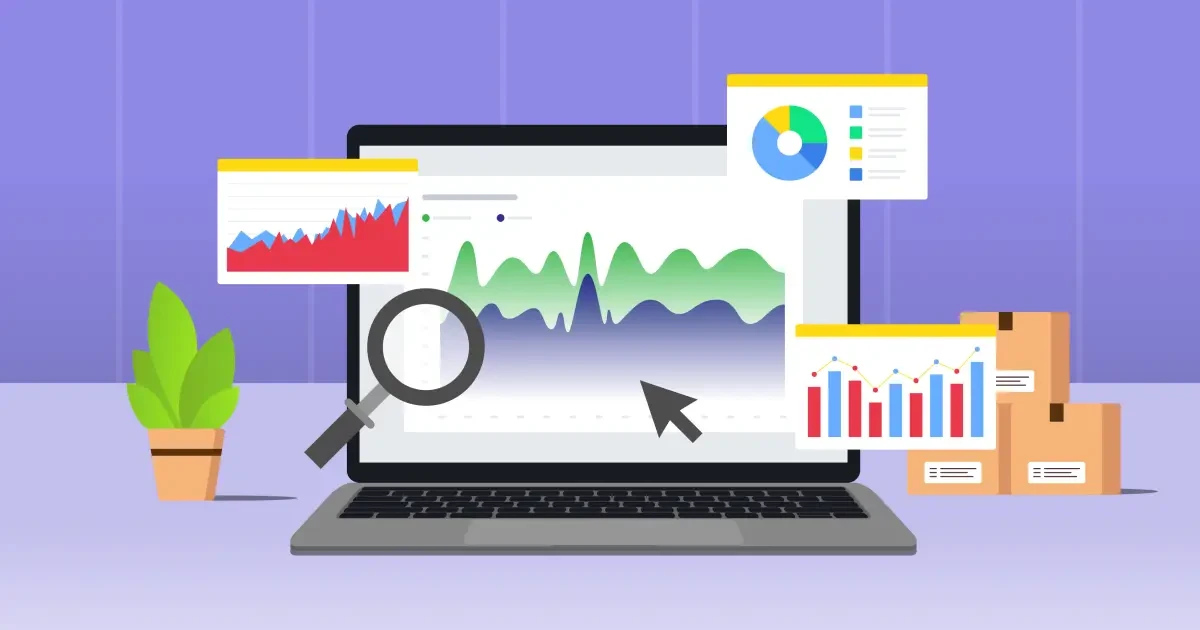
Google Analytics is a powerful tool that can help you track and improve your e-commerce store's performance. In this blog, we will show you how to use Google Analytics to boost your e-commerce success.
1. Set Up Google Analytics for Your E-commerce Store
Before using Google Analytics, you need to set it up on your website. Here’s how:
- Create a Google Analytics Account: Go to the Google Analytics website, sign in with your Google account, and create a new account for your website.
- Install Tracking Code: Once your account is created, Google will provide you with a tracking code. Place this code on all pages of your website to start collecting data.
- Enable E-commerce Tracking: In Google Analytics, go to the “Admin” section, click “E-commerce Settings,” and enable e-commerce tracking. This allows Google to track important e-commerce metrics like transactions and revenue.
2. Track Key Metrics for E-commerce
Once you’ve set up Google Analytics, the next step is to track the most important metrics for your store. These are key to understanding how your store is performing.
- Revenue: Track how much money you are earning from sales. This will help you understand the overall performance of your store.
- Product Performance: Google Analytics allows you to track which products are selling the most. This data will show you which items are popular and which may need more promotion.
- Conversion Rate: The conversion rate is the percentage of visitors who complete a purchase. Monitoring your conversion rate will help you see how well your site is turning visitors into customers.
- Average Order Value (AOV): This is the average amount a customer spends when they make a purchase. Increasing your AOV can significantly impact your store’s profitability.
- Cart Abandonment Rate: This metric shows the percentage of shoppers who add items to their cart but don’t complete the purchase. A high abandonment rate may indicate issues with your checkout process.

3. Use Google Analytics to Improve User Experience
Google Analytics can help you understand how users are interacting with your website, which can help you improve their experience.
- User Flow: This shows how customers move through your website, from landing pages to checkout. If users are dropping off at certain points, you can identify problem areas and make improvements.
- Behavior Flow: This shows how users navigate through your site’s pages. If many users are leaving your site after viewing a specific page, it might need optimization.
- Site Search: If your website has a search function, Google Analytics can show you what users are searching for. This data can help you understand customer needs and optimize your site’s content.
4. Set Up Goals and Funnels
Goals and funnels help you track specific actions customers take on your site, such as completing a purchase or signing up for a newsletter.
- Set Up Goals: In Google Analytics, you can define goals to track actions like purchases, sign-ups, or page views. This helps you measure how well your website is achieving its objectives.
- Create Funnels: A funnel is a series of steps that lead to a goal. For example, the steps in the checkout process (adding items to the cart, entering shipping details, completing the payment). If many users drop off at a specific step, it may need attention.
5. Segment Your Data
Google Analytics allows you to segment your data to better understand different customer groups. By segmenting data, you can see how different types of users behave on your site.
- Demographic Segmentation: You can see how users from different age groups, genders, and locations behave. This can help you tailor your marketing efforts to specific customer groups.
- Behavioral Segmentation: Google Analytics lets you segment visitors based on their actions. For example, you can look at users who have made a purchase vs. users who have not.
- Traffic Source Segmentation: You can see where your visitors are coming from—whether it’s organic search, social media, or paid ads. This can help you optimize your marketing strategy.
6. Use Google Analytics for Marketing Insights
Google Analytics can provide important insights to improve your marketing efforts.
- Campaign Tracking: If you’re running ads or email campaigns, you can use UTM parameters to track the effectiveness of those campaigns in Google Analytics. This will help you see which campaigns are driving the most sales.
- Ad Performance: Google Analytics shows you how well your paid ads are performing. By analyzing this data, you can adjust your ad strategies to get the best return on investment (ROI).
- Email Marketing Tracking: You can track the performance of your email marketing campaigns by linking them to Google Analytics. This will show you how much traffic and sales come from each email.
7. Leverage Google Analytics Reports
Google Analytics provides various reports that can give you deeper insights into your store’s performance. Here are some of the most useful reports for e-commerce stores:
- E-commerce Overview Report: This report gives you a snapshot of your store’s revenue, transactions, and conversion rate.
- Product Performance Report: This shows you how each product is performing in terms of sales and revenue.
- Sales Performance Report: This report gives you a detailed view of sales, including metrics like average order value and product revenue.
- Time to Purchase Report: This shows how long it takes users to make a purchase after visiting your site. This can help you understand the buyer’s journey.
8. Continuously Optimize Your E-commerce Strategy
Google Analytics isn’t just a tool for tracking data—it’s a tool for improving your e-commerce store. By continuously monitoring your data, setting goals, and optimizing your site based on what you learn, you can improve your store’s performance over time.
For example, if you notice a high cart abandonment rate, you can optimize the checkout process to make it easier for customers to complete their purchase. If you see that certain products are not performing well, you can adjust your marketing strategy to give them more visibility.
Conclusion
Google Analytics is a powerful tool for e-commerce success. By setting it up correctly, tracking key metrics, improving the user experience, and using marketing insights, you can optimize your store’s performance and increase sales. Regularly analyze your data and make improvements based on the insights you gather to ensure your e-commerce store’s long-term success.













